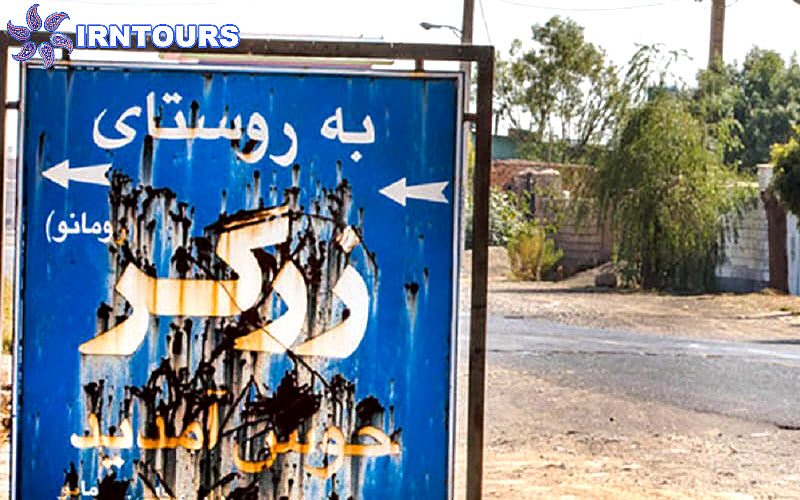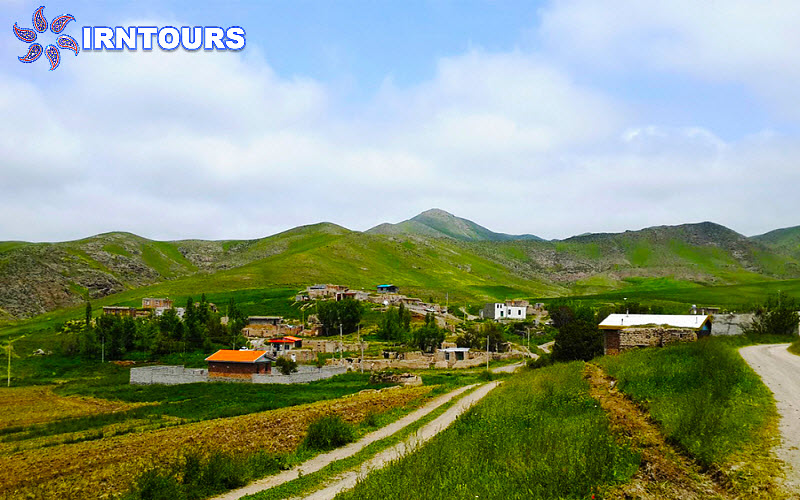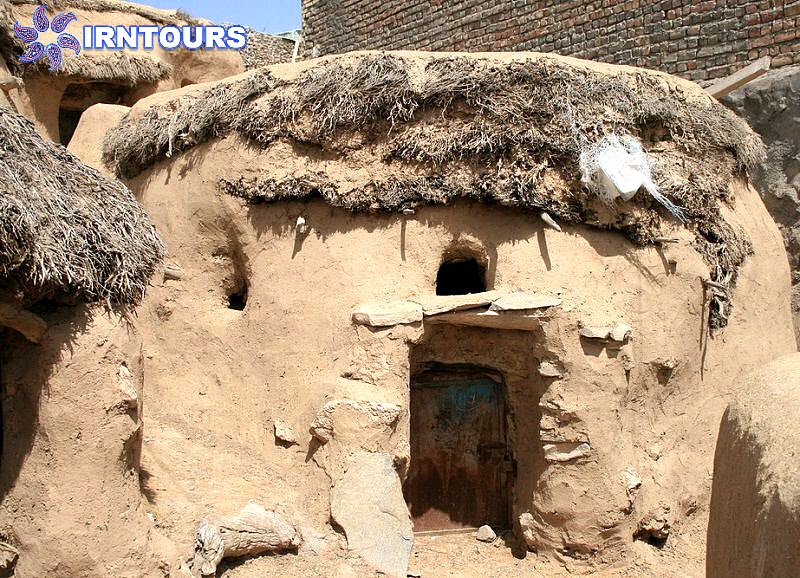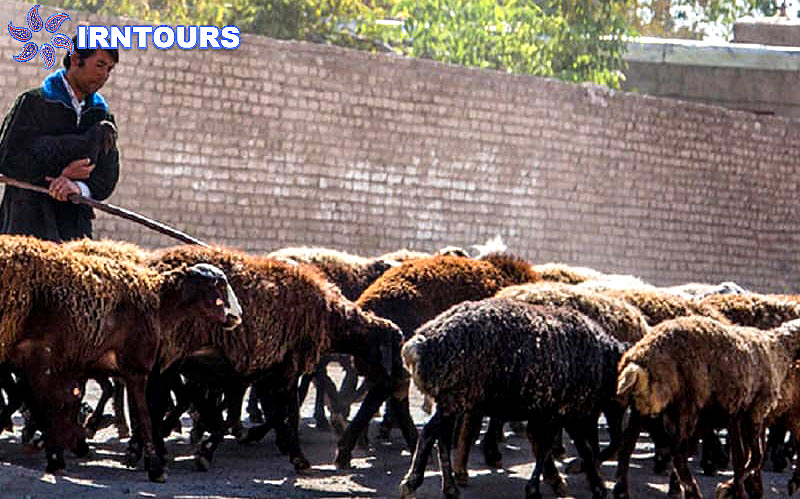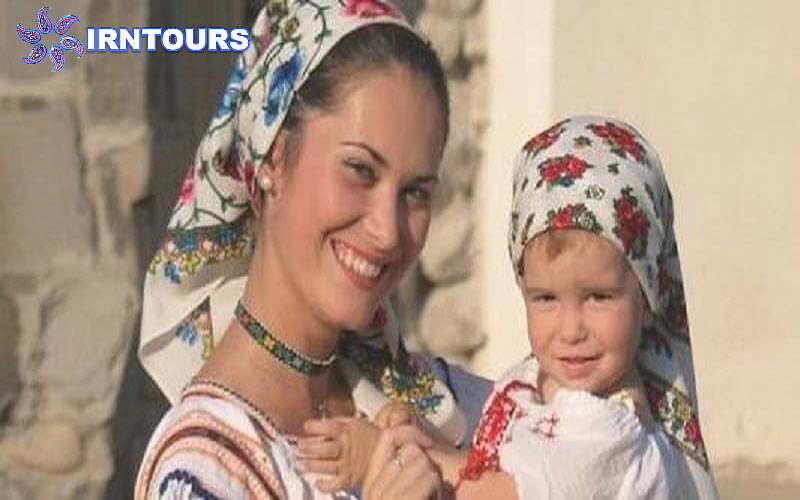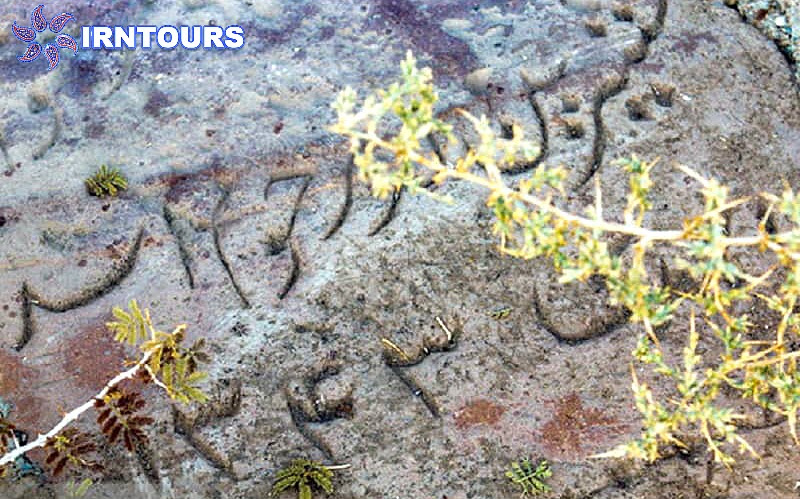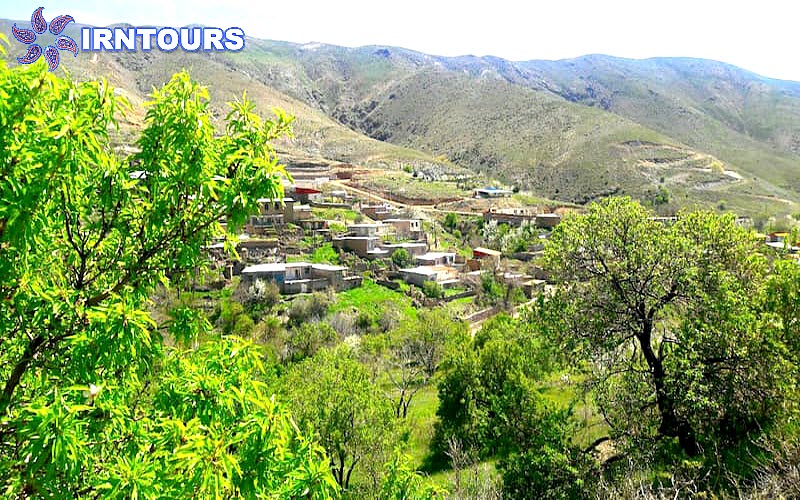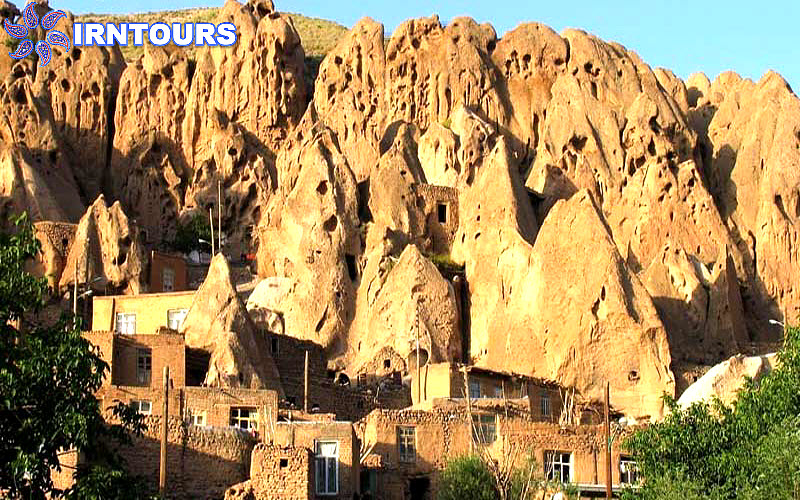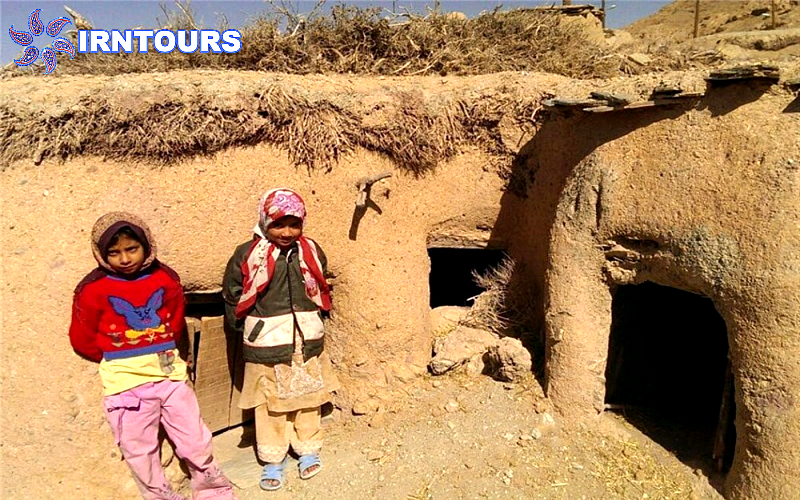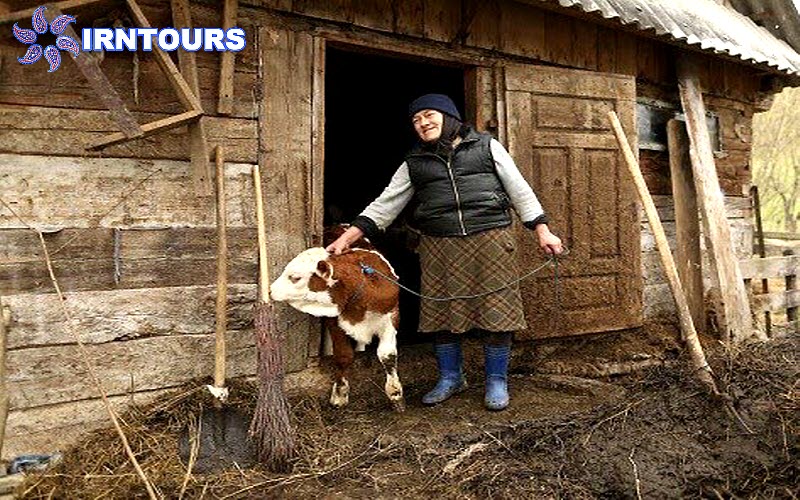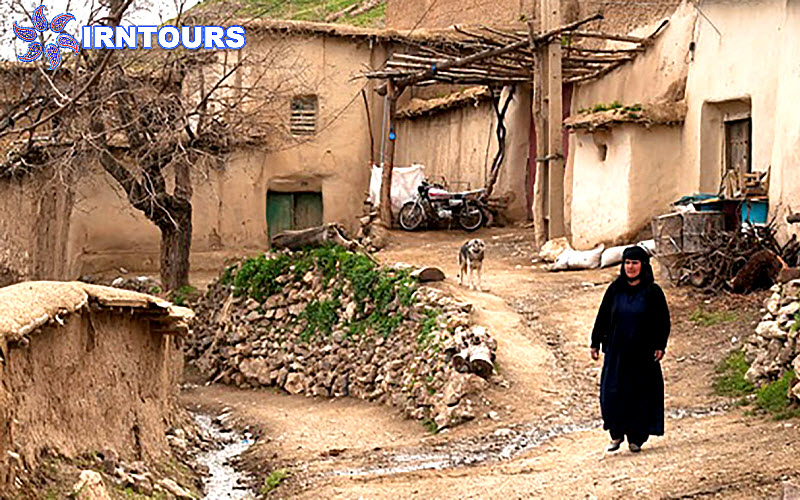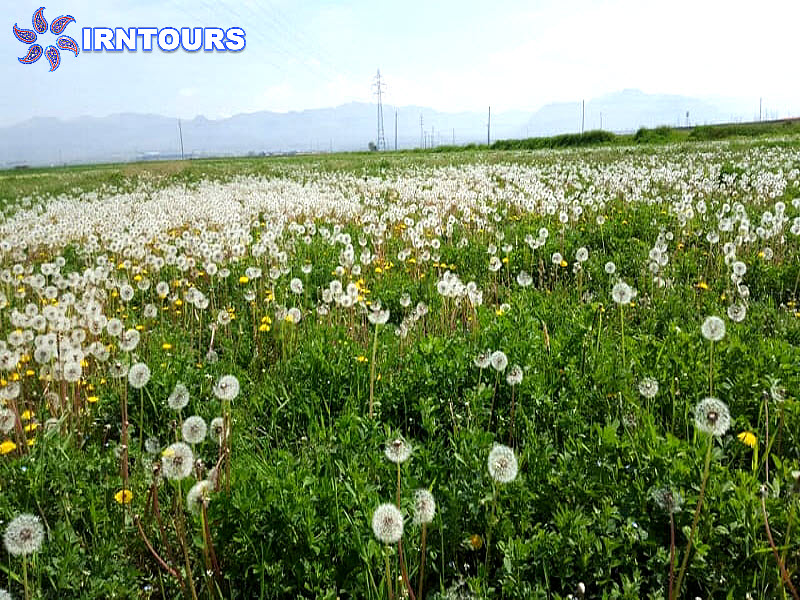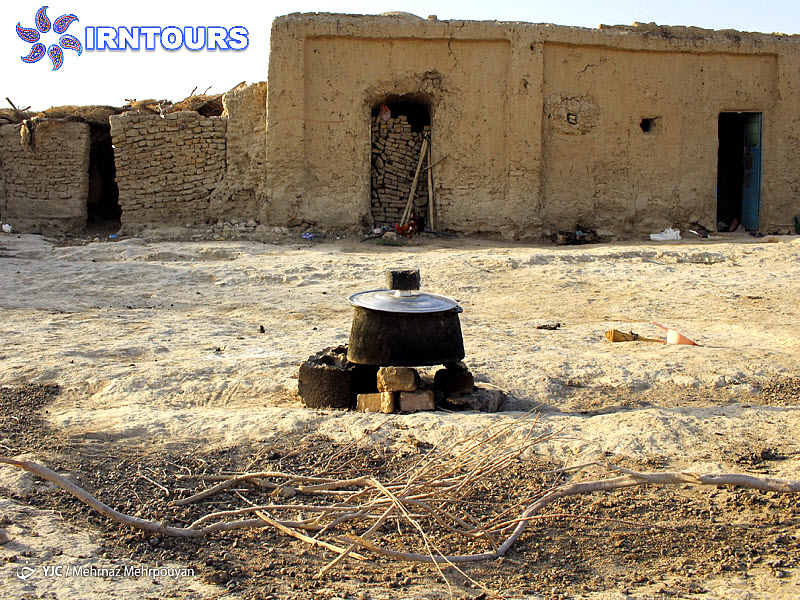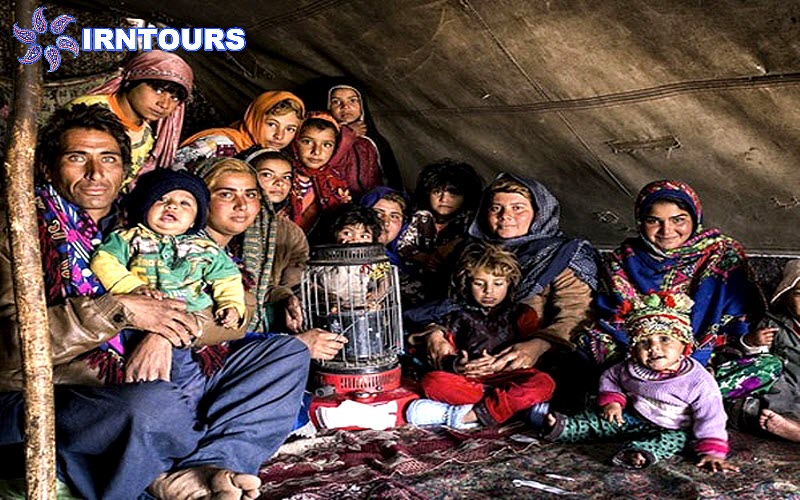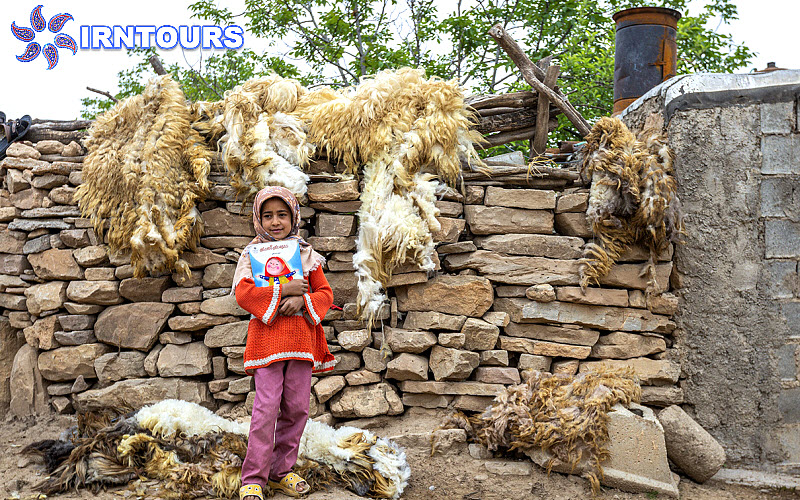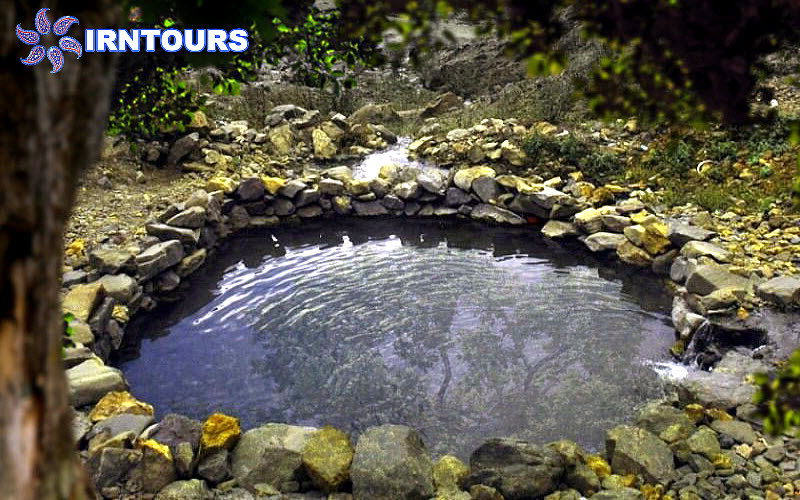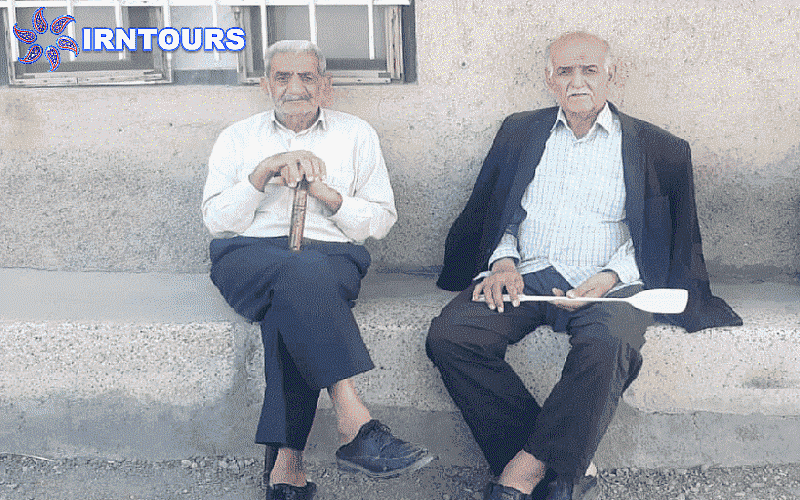About Zargar Village Qazvin
Have you ever heard of a village in Iran whose people have European origins and are fluent in a language other than Persian and local Iranian languages? Zargar village is one of the famous places in Qazvin, where people speak Romano language in addition to Persian and Qazvini Turkish. There are many legends and narratives about the origin of the people of this village and how this people came to be near the capital of Iran, which are very remarkable. Stay with us to introduce you to Zargar village, which has earned the title of the strangest village in Iran.
Zargar village is one of the villages around Tehran and is located in its northwest direction. This village is located in the Eastern Besharayat section in Abike city of Qazvin province. Zargar is located 22 km from the city of Abek and in its western direction. The distance from Zargar village to Tehran is about 115 kilometers. Zargar is also about 67 kilometers away from Karaj. Karaj is located in the southeast of Zargar Abek village.
Qazvin city is located at a distance of 51 km from Zargar Abek village, in the northwest direction of this village, and the vineyard is also located in the west of Zargar. Of course, with a distance of about 100 kilometers. Alamut area is located in the north of Zargar village and you have to drive about 108 km to reach it. Alamkoh is also located in the northeast of Zargar Qazvin village and it is about 260 km away from the village.
If you are going to Zargar from Tehran, you have to drive about 115 km in highway Tehran-Karaj and then Karaj-Qazvin to reach Abik. After passing through Abik, continue for about 15 km on the Karaj-Qazvin highway to reach a side road. Qazvin Anemone Plain is located on the side of this side road. Enter this side road to finally reach Zargar village of Qazvin.
- Address: Qazvin province, Abyk, Besharayat section
Introduction of Zargar Abad village
Have you ever heard anything about a village with European ethnic groups in Iran? Zargar village of Qazvin is one of the strangest villages in Iran that has people with Aryan faces and tall European stature. People who are both Iranian and European, gladiator and viking can be seen in them. The population of this village is about 750 people (182 households) according to the 2005 census. The people who live behind the railway tracks that the trains pass by non-stop. Zargar village is a 14 km village; An area with simple houses, iron doors, high walls and large gardens filled with the shade of fruit trees.
The ancestral origin of the native people of Zargar village is still unknown. The presence of rural people a few kilometers from Tehran, who are fluent in a language other than Persian and Turkish, has been a mystery that no one has succeeded in solving so far. One of the most important questions about the authenticity of the people of Zargar Abek village is how can a tribe born in one of the villages around the capital are Iranian and their appearance and physical condition such as eye color, height and body conform to European standards? Until now, various researches have been conducted about the integration of Iranian and European people in Zargar village of Qazvin; But none of them have reached a definitive conclusion and need further investigation.
History of Zargar Abek village
How do you think people who speak the Romano language reached the goldsmith village of Qazvin? Some believe that the ancestors of this people migrated to Iran in the distant past. According to this theory, it is said that some of these nomadic people finally reached Zargar village and chose this area for permanent residence because of the good weather.
It is not clear from which land the Romano people came and for what reason they spread in the world; But according to this narrative, it is said that the Romanos were a tribe with a nomadic lifestyle that entered our country centuries ago from the northern borders of Iran and spread in different regions. They gradually chose a successor and their descendants are currently living in Zargar Abek village.
Another tradition says that the Romanovs are originally from Iran, and because of their bravery, they were chosen as Qazalbash soldiers of Shah Abbas Safavid. Some also believe that the goldsmiths were warriors and brave people and never were compatible with the governments of the time. For this reason, various rulers spread this people in the world to stay safe from danger; Of course, it is not clear which government, when and from which country made this decision.
There is another story about the village of Zargar, in which it is said about an old man from the village of Zargar who, according to many elders of the village, used to do all his accounts and books and his writings in Russian. The existence of such a person in this area has added a mystery to the past mysteries of the villagers. It is interesting to know that after the death of this old man, no trace of the use of the Russian language was seen in Zargar, and over time, the use of the Romano language became common among the people. Some villagers believe that their origins go back to Romania and Greece, apart from Russia. They believe that their ancestors migrated from these countries to Zargar village.
Speaking Romanian language has made the hypothesis of Italian origin among the natives of this village to gain more strength. Some of the natives of this area tell you a story in which the history of Roman soldiers is mentioned several thousand years ago; According to the people of Zargar, these soldiers (400 people) were captured by the ruler of Iran during the war between Iran and Rome. But the king pardons the soldiers because they are trained and strong. Finally, these soldiers go near Qazvin and settle there.
In another narration, it is stated that goldsmiths are most probably the same European gypsies who in the past came from a village around Tehran and stayed in this place forever.
There are also stories in which it is said that when they were getting birth certificates for the residents of this village, the women of this area were busy making jewelry; For this reason, they named the village Zargar.
In the meantime, some historians believe that the ancestors of Zargar Abike village have authentic Iranian roots. Most of the inhabitants of Zargar village also believe in the same theory. Despite the Romano dialect, they all consider the said narratives and hypotheses to be legends and are proud of their Iranian roots. They write in Latin:
«meen iranisom» : i am iranian
«Kato dayatar oyolom» : It means that I was born here from my mother
«irani boot manga» : It means I love my country.
Studies of Homayoun Zargar, Zargar scientist
According to the investigations and research conducted by Homayoun Zargar, Zargar, it seems that the Romanos entered Iran during three periods. For the first time during the reign of Bahram Gore, 3000 Romanos entered Iran and gradually dispersed in different regions of Iran. The second group, which included Romanian artists, writers, Zargar, carpenters, and blacksmiths, came to Iran during the reign of Shahpur I to build a bridge, and the third group migrated to Iran during the reign of Nadir Shah Afshar for architecture, craftsmanship, and goldsmithing.
Zargar writes poetry in Romano language and is writing a multi-volume book about this language. He says:
I worked on the Romano language and historically I haven’t done much research on village history; But there were researchers who had conducted studies in this field and I saw their findings a few years ago. The most documented historical account of the Romanos is that they were immigrants from India and the Kashmir region who migrated from their homeland for some reason during the Sasanian period. The reason for their movement is not known historically; But what is certain is that they were a large tribe and some of them came to Iran on the way of migration and another group went to Europe.
Documents show that after entering Iran, they played a role in the rise to power of the Sassanids in Iran and later gained influence in the Sassanid court. In the conversations I had with the history professors of Tehran University, they did not reject the fact that the Rumlu tribe, which was effective in gaining power of the Sassanids in Iran, could be the same tribe that came to Iran from India.
According to the writings included in Naderi’s Alam Arai book and also in Naderi’s History Jahangoshai book, all the Romanos who lived in Iran stayed in this land by their own will. Humayun Zargar says:
The main center of residence of the Romanos in Iran was the village of Zargar, and some of them later migrated to other areas in the country. A number of Romano speakers had settled in Ardabil for thirty years. Of course, according to the latest information I have, the inhabitants of these tens have completely forgotten the Romano language and speak Turkish.
Another part of Romano speakers living in Iran live in the village of Qeshlaq Zargars in Shahryar. But according to the available documents, a group of them had also migrated to Fars and Khuzestan provinces. Humayun Zargar says:
In 1970, during a trip to Fars, I saw an old woman who sporadically used Romano words in her conversations, and that’s when I realized that this language is still common among a group of nomads. But because that group was in Koch, I could not find them.
According to the findings obtained in Homayoun Zargar’s studies on the Romano language, this language was at some point influenced by the common Turkish language among Shahson Turks, and for this reason, a number of Shahson words entered the Romano language. These evidences, in addition to other available documents, show us that the Romanos living in the Abiq region of Qazvin are the survivors of a group that entered Iran during the Safavid era.
Ahmad Faraji also mentioned this issue in an article in Shahryar city encyclopedia and says:
The Zargars joined Iran as Qazalbash forces by settling in Eastern Rome, which is now Turkey. Some believe that the goldsmiths came to Iran 600 years ago from the Anatolian side because of Yalaq and Qashlaq, and settled in these areas during the Safavid period, and have been able to preserve the goldsmith language, which is somehow called Roman.
Gernot Windfuhr reports
Gernot Windführer (German professor) also has reports about Zargari language in Iran, which is in accordance with the statements of many elders of Zargar village. In this report, it is stated that three goldsmith brothers named Ahmad, Saifullah and Zabdal Malik were brought to Iran by Nader Shah in the years 1737 to 1747 from Rum and the Ottoman Empire, and the lands of the present village of Zargar were used as pastures for Qashlaqi and Khamsa Zanjan was given to these three brothers as a summer pasture. Because they were very talented and highly skilled. Ahmad settled in Zargar, Saifullah settled in Baqrabad and Zabdal Molk settled in Qaraqabad. They were exempt from taxes and military service and were officially supported by the government until the reign of Ahmad Shah (1909 to 1925).
During the reign of Reza Shah (1925 to 1941), Ahmad, Saifullah and Zabdal Molk left their summer pastures and settled in Qashlaghi pastures. The goldsmith clan is also described in Mirza Mohammad Hossein Hosseini Farahani’s travel book; A travelogue that was written by the order of Naser al-Din Shah Qajar in 1885, during his trip to Qazvin.
The language of Zargar village people
One of the charms of the native people of Zargar village is their language. The inhabitants of Zargar village speak Romano, Romanlo or Zargari language; Of course, you should know that the language of Zargar in this village is mixed with Turkish and Persian. Romano is a Latin language and is one of the Indo-Aryan languages, and people in many European countries speak this language. Romano language is an official and complete language and has its own rules. This language is not a regional dialect, and according to linguists, most likely, the roots of the Romanian language go back to the language of the ancient Roman peoples, or Rumelia.
The Zargari language is the only language that has preserved its main feature of the Indo-Aryan language. The language of this village was first studied in 1970 by Gernot Windführer. He says that the Zargari language is a type of European Romanian language that is very similar to the dialect of the Mariza Valley people in southern Bulgaria. Long after Windfour, three Iranian researchers studied this language. These studies showed that the Zargari language is also spoken in the neighboring villages of Zargar, Baqrabad Turk, Zargaris living in Abyk, in Qeshlaq Zargarha in Alborz province, in Shahryar and Qochan.
Some people consider the Zargari language common in Zargar village to be the same as the famous Zargari language that is mixed with the letter “z”; But keep in mind that these two languages are completely different.
According to one of the residents of this village, who is more aware of the history of Zargar village than others, no one but Zargars will notice the common Romanian language among them. He says that during the Iran-Iraq war, they used this language to talk on the wireless so that the Iraqis would not understand what they were saying. The zargars themselves are not sure whether they came from Rome or from India or from another country.
Zargar people are very hospitable and loving; For this reason, when talking to strangers, they speak slowly and carefully so that non-Romanos can understand what they are saying. Among the common words in the Romano language in the village of Zargar can, he mentioned “Qamil”. This word is actually the same as “Camel” (Camel) in English, which means “camel” which Zargasrs pronounce as “Q”. “Famla” in Zargari language is the same as “Family” in English.
Other words in Zargari or Romano language include “Derin” meaning “three”, “Miri” meaning “for me”, “Diri” meaning “for you”, “Macho” meaning “fish”, “Rome” meaning “bed”. , “Gud” means “shirt” and “Jaghallis” means “fox”.
In order to prevent them from forgetting the Romano language, the people of Zargar village speak Romano to their children when they are born, so that this language is passed on to the next generation and survives.
Jobs of Zargar village people
The lifestyle of the people of Zargar village is similar to other villages in Iran, and chickens and roosters are an important part of their lives. They are Muslim and Shia, and their profession is mostly livestock, agriculture and beekeeping. The women of Zargar village also help the men in their work and are self-sufficient in baking bread and preparing butter, cheese, yogurt and buttermilk.
The Culture of Zargar Village People
In addition to the language difference, the people of Zargar village have many differences with other ethnic groups in the country, and music is very important among the people of this village. Native people of Zargar have special traditions to welcome their guests. They consider the guest to be a blessing and they go to welcome their guests with a local musical instrument called Chugur and bring them “Ayraneh Si”; Chilled yogurt with ice cubes topped with a heaping tablespoon of butter.
The style of dressing or the way of life of the youth of Zargar village is not much different from the big cities; But still, like their elders, they respect their ethnic beliefs and beliefs, and despite the decrease in the number of marriages among the villagers, young people still defend their language, script and authenticity. The youth of Zargar village are less willing to marry their fellow villagers due to the fear of hereditary and congenital diseases. But in case of marriage with strangers, they also speak Romano language to protect this language. Zargar is the only Romano-speaking village in Iran that has kept this language alive. It is interesting to know that this language has also been used in some other regions of Iran; But with the passage of time, it has been forgotten.
Loyalty in marital emotional relationships is very prominent among the residents of Zargar village; So much so that a lady whose husband has died does not remarry. Meanwhile, in this village, remarriage of married men is defined as an inappropriate act. Prejudice and adherence to family is one of the important rules of families in Zargar village. In this region, no family breaks up and the divorce rate is very low. Mental, social and behavioral disorders such as stress, depression, bad mood and other behavioral abnormalities are not seen among the people of this region and most people live in perfect mental health.
There is no trace of crime in Zargar village, and if someone commits a crime, the villagers will reject him. Adhering to customs and culture and respecting the beliefs of the ancestors are other characteristics of the people of Zargar village. The people of Zargar village, unlike Iranians, who are very complimentary, do not like to compliment and praise too much, and are known for being frank and forthright.
Women have a special privilege among the inhabitants of Zargar village. They respect women and girls a lot, and in their culture, a woman is the queen of the house. The Romanos living in Zargar village, like other Romanos in the world, have a flag with their own design and color. However, they recognize the flag of Iran as the flag of their homeland.
The yard, fence and wall have no place in the architecture of the houses of the people of Zargar Abek village. In this area, the yard is shared among others and no house has a separate designated share. In fact, the people of Zargar village consider the designation of the yard and the creation of a fence in this area as a sign of distrust and disrespect to others.
Wedding ceremony in Zargar village
Wedding celebrations in Zargar village are very similar to the celebrations in the capital; But the people of this region prefer a person named “Amu Kitab” or “Ashq Kitab”, his drumming on the chugur instrument and his love stories to all the entertainment programs common in marriage ceremonies. “Amu Kitab” is a village singer who tells love stories in Turkish writings to people.
“Book lover” is the only chugur musician among goldsmiths whose main job is to tell love stories; Of course, if we don’t count some young people who play chugur for fun. During the playing and reading of “Amu Kitab”, everyone sits on the floor and while hugging their knees, they immerse themselves in the world of his Turkish love stories. Goldsmiths believe that it is love that makes creatures move and life without love is nothing. In the following, we will tell you two famous love stories in Zargar village.
In the story “Karam and Asli”, “Karam” is in love with an Armenian named “Asli”; But the original father does not allow him to marry a Muslim person. Karam and Asli are infatuated with each other and decide that if they are not going to meet, it is better to be cremated according to the ritual of time. The ruler of the city is a Muslim and he is not satisfied with burning these two lovers. Therefore, he makes two statues in the form of a lover and a beloved and burns them in front of the eyes of all the people of the city. While Karam and Asli meet in another city.
“Qarib and Shah Sanam” is another romance in Zargar village. Almost in his sleep, he holds up his two fingers and through them he sees a girl in Tbilisi with a face similar to a fairy. Shah Sanam also saw a fairy-like boy in Tabriz in his dream in Tbilisi. These two dreams happen at the same time. Gharib wakes up and moves towards Tiblis, and Shah Sanam also sits at the gate of the city waiting for him. At this moment of telling the story, the chugur strings release a mesmerizing sound in the space and make the audience excited.
The Reputation of Zargar Village in the Internet
Zargar village became famous when some of its educated and young residents published some words in the Romano language on the Internet and asked all the people of the world to travel to Iran if they know these words. A few months after publishing this message, three travelers from Canada, France and England came to Zargar village. While they were happy to meet their fellow speakers in Iran, they were very surprised that they had not found them yet. According to the residents of Zargar, these three foreign travelers came to Iran many years ago on a trip to find the remnants of the Romanovs and followed them to Fars and Khuzestan. But they had not found the main headquarters of the Romanovs in the village of Zargar.
The foreign visitors of Zargar village, while happy, were surprised by the mixture of Romano language with Persian and Turkish languages. According to them, the originality of the Romano language in Zargar village as it is pronounced in Europe has been lost. They were also surprised by the fact that the Romanians of Iran, like their 18,000 known co-speakers in Europe, do not have a Romanian identity and are far away from them.
Most of the Romano speakers live in a region in Spain, and the rest of them are scattered in different countries. The interesting thing about this people is that they have been searching for their co-speakers for years.
Various rumors about Zargar village
In the reports published on the internet about Zargar village, many people have given this village the title of semi-European village of Iran. Some have also written that a river passes through Zargar village and people travel by boat in this area. But you should know that there is no boat or river in this village and the only thing visible is the yellow and green fields of Zargar village.
Another rumor about Zargar village is the prevalence of Latin script as the writing script of the people of this village. Shahla Zargar, one of the middle-aged women from Zargar says:
Our language is Romano. There are other people in the world who speak this language; But we never wrote in Latin here. Our script is Farsi, all our children write Farsi, and I don’t know how and from where this false information was spread from our village that everyone here writes in Latin!
It is interesting to know that none of the villagers remember the prevalence of writing in Latin script in this area. The fact is that the men and women who lived in this village in the past and spoke authentic Romanian language, were not literate; But where does this rumor originate?
Mohsen Zargar, one of the residents of the village, says that Zargari language is in a way that cannot be written in Farsi in terms of phonetics and the way words are pronounced. He says:
Not that it is not possible, it is possible to write the Romano language in Persian as well; But the pronunciation of this language is such that if it is written in Persian, it will be read only by Arabs, so if you are going to write this language, you need to use Latin letters. I think this rumor came from the place where some people thought that the people of the village write in Latin.
Sightseeing places of Zargar village
Green foothills and vast wheat fields are among the tourist attractions of Zargar village, especially in spring. Watching natural landscapes, green trees, continuous mountain ranges, foggy weather, small village huts are some of the tourist activities that you can do in this area.
Life in Zargar village is associated with livestock farming and farming, and spending time in this simple rural lifestyle, even if it is short, can give comfort and peace to city dwellers who are plagued by many worries and crowds. Among the villages around Tehran, Zargar village of Qazvin is a wonderful destination for a one-day trip and breathing clean air; Especially for the residents of the capital who breathe polluted air most of the year.
On your trip to Zargar village of Qazvin, watch the beautiful natural scenery, enjoy the simplicity and greenness of nature and immerse yourself in the relaxing silence of the village. In this village, go to the local people and ask about their legends and stories to learn more about the culture of Zargar residents.
Zargar village residence
The trip to Zargar village is usually one day; But if you plan to stay the night, go to Qazvin and stay in a hotel, apartment hotel, guest house, house and private suites in this city. Keep in mind that staying in Zargar village is not possible.
The Best Time to Travel to Zargar Village
The climate of Zargar Qazvin village is mountainous and tourists travel to this area in four seasons to enjoy the clean and pleasant air. Spring in Zargar is associated with greenery. At this time of the year, the whole village is covered with green and the blossoming trees create a beautiful view in the area. The best time to travel to the Latin-speaking village of Qazvin varies depending on people’s opinions; But most tourists choose the spring season to travel to Zargar.



